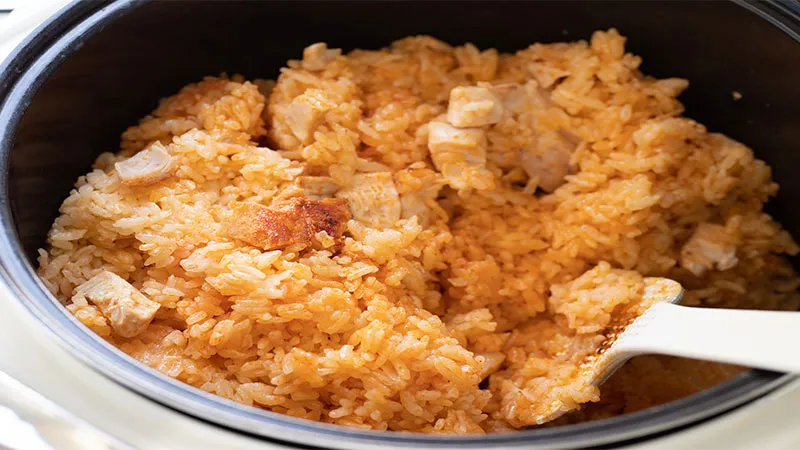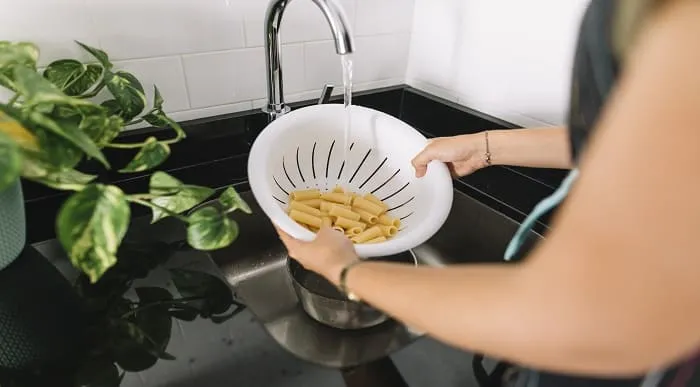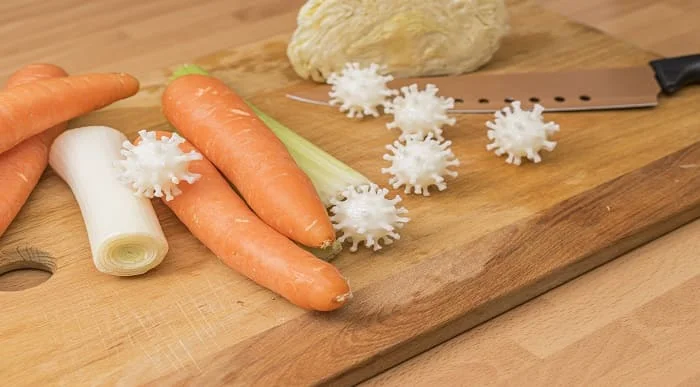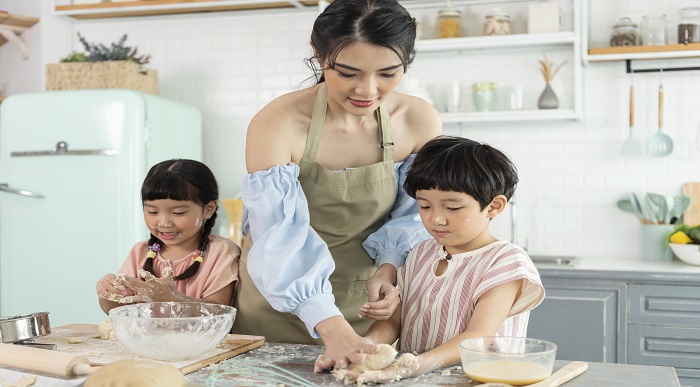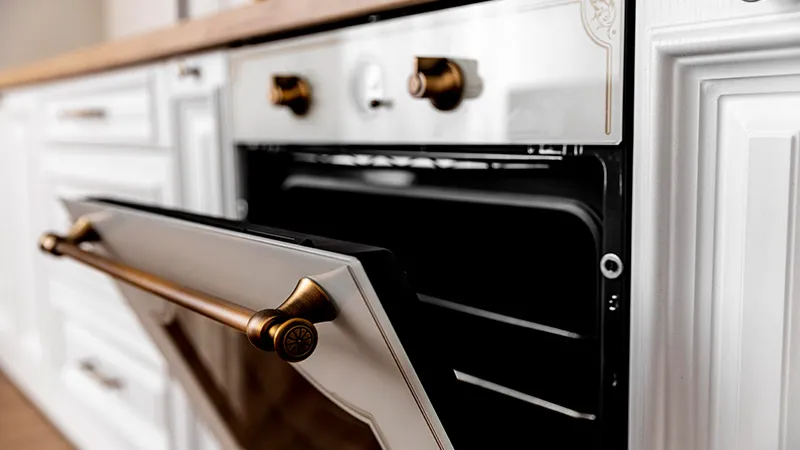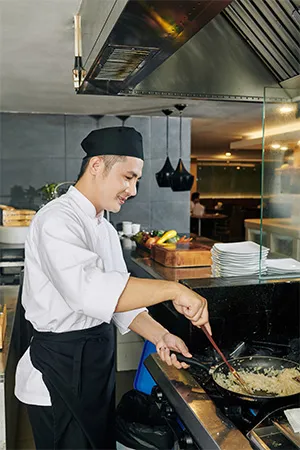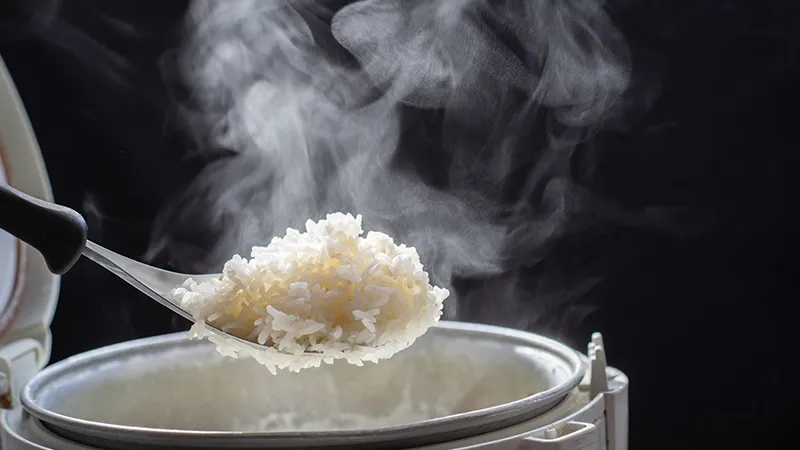Food Hygiene & Safety
Can You Reheat Rice? What is The Science of Reheating Rice
“Can you reheat rice?”, “Can you reheat cooked rice?” The answer to both of these questions is: yes, you certainly can. There’s a common misconception that we should never reheat rice. However, this is not the case. Rice can be reheated, but you have to take special care to ensure that it is safe to consume.
Today, we discuss the science behind reheating rice. So stay put.
Table of Content
Can You Reheat Rice?
The common misconception that reheating rice is bad comes from the fear of food poisoning from a type of Bacillus bacteria called Bacillus cereus. Let’s introduce you to it before we proceed further.
Bacillus Cereus
A quick look at Wikipedia tells us that Bacillus cereus are abundant in a variety of places, including soil, food, and marine sponges. There are quite a few types of this bacteria. Some classes of this bacteria are hazardous to people and can cause food poisoning, while others can benefit animals as probiotics. The bacteria is most commonly caught through fried rice dishes sitting for hours at room temperature.
 Are you looking for a Food Hygiene & Safety course?
Are you looking for a Food Hygiene & Safety course?
Why does Bacillus Cereus Matter in the Case of Rice, Cooked or Uncooked?
Rice is more problematic than other leftover foods only because it may contain Bacillus cereus, which survives some cooking techniques.
Food poisoning from reheated or cooked rice is not uncommon because of this bacterium. Food poisoning causes diarrhoea and vomiting, and in persons with underlying health problems, it can lead to serious complications.
An article in The Guardian talks extensively on this topic. They also mention the celebrated food scientist Harold McGee and his famous book On Food And Cooking: The Science And Lore Of The Kitchen. Harold McGee says in his book that:
“Raw rice almost always carries dormant spores of the bacterium Bacillus cereus, which produces powerful gastrointestinal toxins.”
Here gastrointestinal toxins refer to food toxins.
Because those bacterial spores in food may survive the cooking process, the longer rice is left at room temperature, the more bacteria are likely to flourish.
But, there’s no need to be concerned about reheating cooked rice as long as you keep it properly. It’s the foundation of many delicious dishes.
Check out our other blog, “What is the Temperature Danger Zone for Food? Chart Included.”
Storing Cooked Rice
McGee recommends chilling cooked rice within four hours.
However, the NHS goes a step further and advises cooling them down as quickly as possible and putting them in the fridge within an hour. They also suggest throwing away cooked rice after 24 hours, never reheating it more than once, and making sure it’s piping hot all the way through, which McGee sets at 73°C (163°F) or higher.
They also suggest never allowing the rice to cool in a rice cooker, steamer, or pan. Dividing the rice into smaller bits, spreading it out on a clean, shallow tray, or placing a container of hot rice in a bigger container of cold water or ice to chill it faster is a safe method of cooling cooked rice.
Do I Need to be Concerned Regarding Reheating Rice?
Again, if you’ve read the above portion of the blog well, you should know by now that cooked rice is perfectly safe if stored properly. You can reheat it and use it later.
There are many delicious dishes that are based on cooked rice.
Take Italian arancini in the above image, for example. Arancini is a traditional Sicilian dish. It’s an Italian rice ball with a gooey mozzarella core cooked with white wine risotto.
So if you just take the proper precautions with rice (or any other food items), you’ll be perfectly fine. There’s really no need to worry.
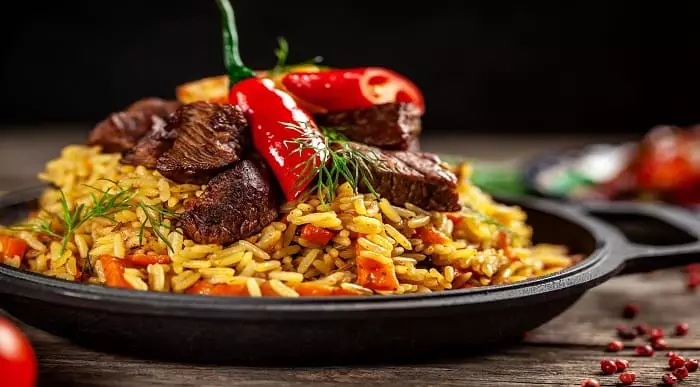
Food Safety Course For Catering Manager
- Accredited Courses
- Tutor Support Included
- 3 Installment Plan at checkout
- 14 Days Money Back Guarantee
How to Reheat Rice?
Although McGee and The NHS recommended how to store and reheat rice, we will go into finer detail for your convenience.
Follow these guidelines throughout your cooking steps where you’re going to use rice.
Safe Cooking Temperature for Uncooked Rice
To ensure no bacteria can grow, make sure the rice reaches a high temperature before cooking. Keep it away from the danger zone, which is between 40°F and 140°F or 4°C to 60°C, where germs thrive.
Cooling Cooked Rice
Once your rice is cooked, cool it down rapidly to further decrease bacteria growth. To speed up the cooling process, you can divide the rice into shallow food containers and seal them with a cover.
Then, put it in the refrigerator or freezer. Risottos and paellas are better frozen than plain rice. Rice or any other hot dish should not be left out for more than 1 hour.
If you forgot to store your rice properly and it sits around at room temperature for more than 2 hours, throw it away. However, if you put it in the refrigerator or the freezer before that, it’ll be good to eat for some time.
Besides, check out our other blog, “What is the Most Common Type of Food Contamination?”
How Long Does Cooked Rice Last in the Fridge?
- Refrigerated leftover rice is good for 3 to 4 days, discard it after that.
- Leftover rice is good for 3 to 4 months in the freezer, discard after that.
Top Courses of this Category
Reheating Rice
There are multiple ways to reheat the rice from your refrigerator or the freezer. One thing to note is that you always have to ensure that the rice is piping hot before you serve it, no matter what method you use.
Reheating Rice Using the Microwave
Can you reheat rice in the microwave? Yes, you can. While this method may not produce the most glamorous dishes from rice, it is undoubtedly the fastest method. To reheat rice in the microwave:
- Remove the lid from the storage container.
- Place the rice in a microwave-safe container. Add a tablespoon (or two, if you want) of broth or water to each cup of rice. Using a fork, break up any clumps of rice and cover the container with a lid or a damp dishtowel.
- To re-steam the rice, place the cover back on top lightly. This procedure keeps the rice moist by trapping the steam formed by warming it in the container.
- Heat in the microwave for 3–4 minutes, or until hot all the way through.
- Make sure the rice is at least 165 degrees Fahrenheit on the inside. Use a food thermometer if you’re unsure.
- Serve right away.
Reheating Rice Through Stir-Fry Method
This is an excellent way of reheating rice as you will probably add eggs, meat or vegetables with the rice to create a tasty dish. To stir-fry frozen rice:
- In a wok, skillet, or sauté pan, heat the oil of your choice.
- After adding the rice to it, constantly move it around.
- Reduce the heat to medium and continuously stir the rice. Make sure the rice clumps are broken up.
- Ensure that the oil coats each granule.
- Check that the interior temperature is at least 165°F using a thermometer.
- When sizzling hot, serve immediately.
Reheating Rice Through Steam Method
Steaming rice is also a great method as you’ll get a fresh taste of fluffy rice if you steam it. You can easily steam rice on the stovetop.
- In a saucepan, take your rice and put a tablespoon of broth or water for every cup of rice.
- You can add 1–2 tablespoons of butter or oil if you want a rich tone to hit your tongue once you taste the rice. It will also smell good too.
- Occasionally stir. Check that the interior temperature is over 165°F once the water has boiled off.
- When the dish gets piping hot, serve immediately.
Take a look at the following video from WikiHow, where they show these methods of reheating rice in a very neat manner.
Conclusion
So, again, can you reheat rice? Yes, you can safely reheat it if you do it appropriately. When cooking rice, it is critical to follow food safety and hygiene guidelines so you can enjoy your rice dishes every day. If you’re eating reheated rice, take the procedures we mentioned in the blog to decrease bacteria development and the risk of food poisoning.
FAQs
Why you should never reheat rice?
As we’ve said in the blog, this is a misconception. Many people consume reheated rice regularly without any problem. So, you can reheat rice, but you also must ensure that it is safe to consume.
It is true that rice is more hazardous than other leftover meals because it can contain the Bacillus cereus bacteria.
Can you reheat packet rice?
Yes, you can. Rice packets contain uncooked rice. Once you cook it, if you store some for later, you can reheat them for consumption.
Can you reheat risotto rice?
Yes, risotto tastes better if prepare the dish with frozen rice. But don’t reheat more than once.
Is it safe to reheat rice in the microwave?
Reheating cooked rice in the microwave, on the stove, or in the oven is safe. To avoid overdrying, always add 1 tablespoon of water to every cup of cooked rice. Rice that has been reheated can be used as a side dish or in meals such as fried rice and stuffed peppers.
Is it safe to eat cold rice from the fridge?
Yes, you can consume cold rice directly from the refrigerator. It isn’t entirely uncommon to do so. But, remember that cold rice is only safe to eat if it has been properly stored and has not been exposed to temperatures exceeding 40 degrees Fahrenheit (4 degrees Celsius) after cooking.
Can you reheat Chinese takeaway rice?
When people ask, “Can you reheat chinese rice?”, they usually refer to reheating Chinese takeaway rice. It is highly advisable that you don’t reheat Chinese takeaway.
Takeout rice should never be reheated because it has already been cooked and reheated. Even if the rice has been properly cooled and kept, reheating it is not suggested and could be severely harmful to your health.
Is it safe to eat leftover rice?
Again, when it comes to leftovers, cooked rice is nothing to be afraid of. What matters is how you store your leftover rice. The dish really doesn’t matter all that much as long as you keep it out of the danger zone. Chill it quickly, store it properly, and reheat it to 165°F so that you’ll have wonderfully tasty and nutritious rice even the second time.
Can you get food poisoning from reheating rice?
The short answer is: yes, eating reheated rice can cause food sickness if you are not careful. The issue is not with the reheating but with the way the rice was stored. If it was stored improperly, which allowed bacteria to grow, you might get food poisoning.
How long should I reheat rice for in microwave?
Microwaving rice for 3-4 minutes to reheat it should be fine. However, check the internal temperature of the rice with a thermometer. If it reaches 165°F (73/74°C) or higher, the rice should be safe for consumption. Also, ensure that the whole bowl of rice has been properly heated.
Is it safe to reheat rice twice?
Technically, if you store the rice perfectly, there shouldn’t be any problem. In real life, however, that is not the case. If rice is reheated more than once, it increases the risk of food poisoning more. So, most people do not advise that you reheat rice more than once.
How can you tell if rice is spoiled?
In the case of uncooked rice, simply inspect the package for symptoms of decomposition, such as holes, bugs, moisture, or wetness, which could lead to mould growth. Discolourations, a rancid or weird odour, or an oily texture will tell you if brown rice has gone bad.
When it comes to cooked rice, the first indicator of spoilage is a strange (or off) odour. Another is the slimy texture. Of course, if there are any discolourations or mould indicators on top of the rice, discard it right away.
Can you freeze and reheat cooked rice?
Yes, you can. If you store your cooked rice in the freezer, make sure you use it within 3 to 4 months.
Can you reheat rice pudding?
Yes, it’s safe. The stovetop is the best way to reheat rice pudding. Fill a heavy-bottomed skillet halfway with leftover rice pudding. Reheat over medium heat with 2-3 teaspoons of milk or cream per serving.
What to Read Next:
- How to Become a Chef in the UK and Worldwide – Difference Include
- Can You Reheat Chicken? Storage, Defrosting and Reheating Techniques
- How Long Does a Level 2 Food Hygiene Certificate Last
- Food Safety Management System: Step by Step Complete Guide
- Why is a Well Designed Kitchen Important to Food Safety – Guide
- Health Safety and Hygiene Rules to Follow in the Kitchen
- What is the Difference between Chef and Cook




